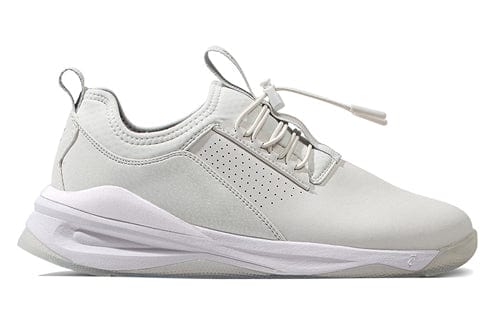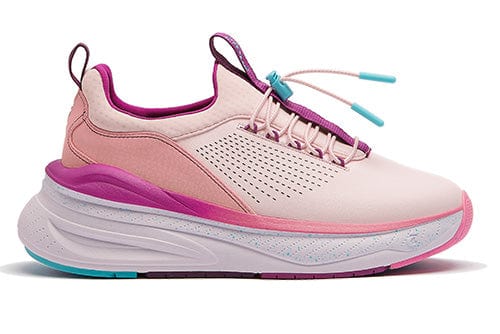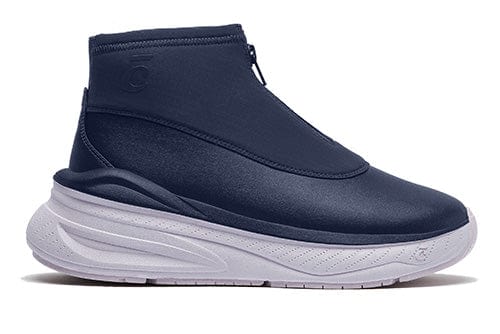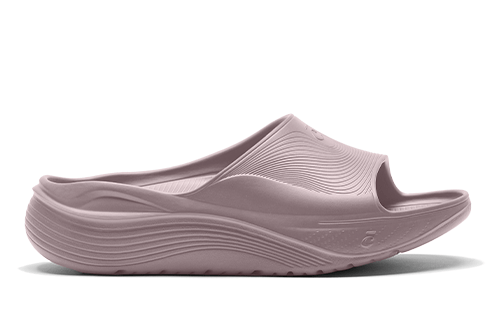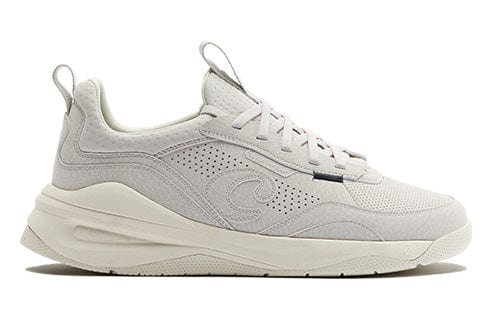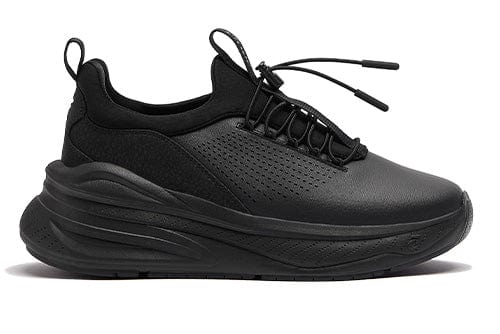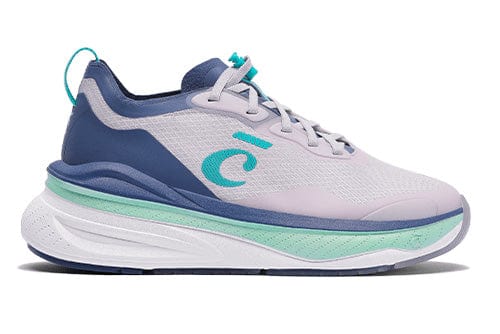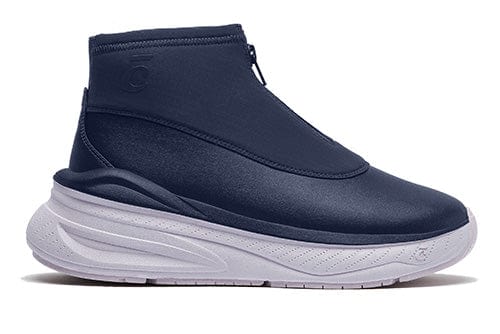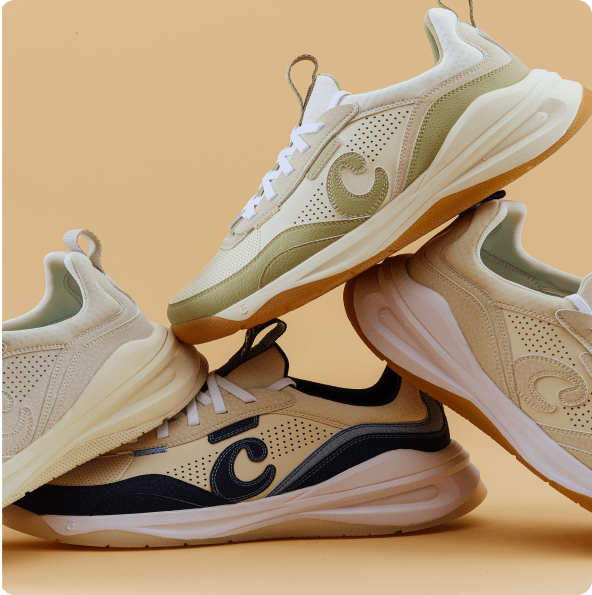Difference Between Walking and Running Shoes
There’s no single speed for a healthcare worker. You operate in arenas that take endurance and agility in equal measure. You might need to switch gears at any moment, and finding shoes fit for the challenge is one in itself.
Can walking shoes keep up with your day? Are running shoes too flimsy to take the heat? What’s the difference, anyway?
In this article, you’ll discover the difference between walking and running shoes and how to pick the style best suited for the job.
Different Shoes for Different Settings
Walking and running are different activities, so they require different shoes. It's not just about speed but a handful of qualities that impact how your feet move and reflex.1
When you walk, your body weight is evenly distributed, and there’s always at least one foot on the ground. Running, however, puts more pressure on your feet, and there's a point where both are airborne. These variances result in distinct needs for walking and running shoes.
How Do Walking Shoes Work?
What are good walking shoes, exactly? Good walking shoes are lightweight with flexible soles. They're designed for comfort and cushioning, particularly in the heel. When you walk, you land on your heels and roll forward before pushing off on your toes. This rolling motion requires an appropriate pair of shoes that can provide support throughout the stride.
Walking shoes offer a firmer forefront to roll you off your toes with each step. The upper section is often soft and breathable and is designed for long periods of wear—and many feature breathable mesh fabrics for ventilation to keep your feet cool and dry.
How Do Running Shoes Work?
Running shoes are all about shock absorption. They feature more cushioning in the forefoot and heel to withstand the impact of striking the ground.
They’re also built for speed and distance, boasting sturdier construction and materials to withstand wear and tear. They typically feature technologies that help propel you forward and enhance the efficiency of your stride.
Running shoes focus on proper alignment and arch support to prevent injuries during high-impact sprints and long-distance jogs. The adjustments account for the repetitive nature and the high-impact forces involved in running.
Choosing between walking and running shoes isn't a matter of preference—it's about what your feet need for the activity you're engaged in. It's about matching the right shoes to the proper movement and ensuring your feet get the right support.
The Differences Between Running and Walking Shoes
Walking and running shoes don’t appear all that different. What is unmistakable, however, is the impact each has on your comfort and safety. They’re both tailored to the unique biomechanics of their respective activities. So, when you’re out and about, your feet are supported, protected, and encouraged to move correctly.
Here are a few specific differences between their designs:
- Heel height – Running shoe heels are higher to cater to the added impact of running. This additional height helps absorb shock and reduces stress on the Achilles tendon.2 Walking shoes, on the other hand, have a lower or flatter heel-to-toe drop for stability and a natural foot strike. This design promotes a steady and balanced gait, minimizing strain on your lower body.
- Flexibility – Walking shoes bend at the ball of the foot, in alignment with your foot's natural flex point, while running shoes bend under the arch. This difference in flexibility caters to the foot motion during each activity, providing the right support and promoting efficient movement.
- Cushioning – Running shoes have thicker cushioning to absorb the impact force, especially in the midsole. This feature provides necessary protection, especially when running on hard surfaces. On the other hand, a good walking shoe, such as our women’s and men’s cushion shoes, offers adequate cushioning in the heel and ball of the foot, considering the evenly distributed weight when walking.
- Weight – A good walking shoe tends to be lighter with less material for cushioning. They're easy on the feet, minimizing fatigue during prolonged wear. Running shoes, while still designed to be lightweight, can weigh more due to the added arch support and cushioning. The extra weight helps ensure durability and robustness, which are necessary for the rigors of running.
Your primary activity should determine the winner of walking shoes vs running shoes. It's all about pairing the proper footwear with the correct function. Walking shoes should do fine for those who sit most of the day. But, if you find yourself dashing for ad-hoc tasks, your feet may need the extra support running shoes provide.
Strike the Right Balance with Clove Sneakers
Seldom the same are any two days in the world of healthcare. Walking and running is only part of the story; there are spills, grime, and grit that mass-market shoes simply don’t account for. And that’s precisely why Clove came to be.
We designed our signature sneaker for healthcare professionals. We’re proud to end the compromise between comfort, style, and durability.
Our healthcare shoes are sleek and easy to clean, perfect for long shifts packed with mayhem. They're endlessly comfortable, easy to slide on, and a breeze to wear all day. Choose from a variety of styles such as our Women’s Solo and Women’s Classic collection, each offering a palette of colors to suit your style.
Slip into a better way to work with Clove today.
Sources:
- PubMed. Differences in muscle function during walking and running at the same speed.https://pubmed.ncbi.nlm.nih.gov/16129444/
- PubMed. The Effect of an In-shoe Orthotic Heel Lift on Loading of the Achilles Tendon During Shod Walking. https://pubmed.ncbi.nlm.nih.gov/26755409/


